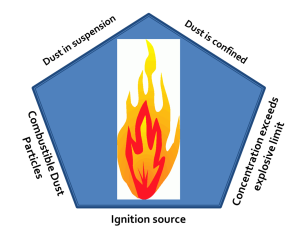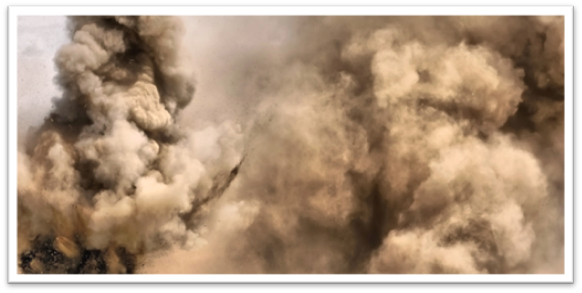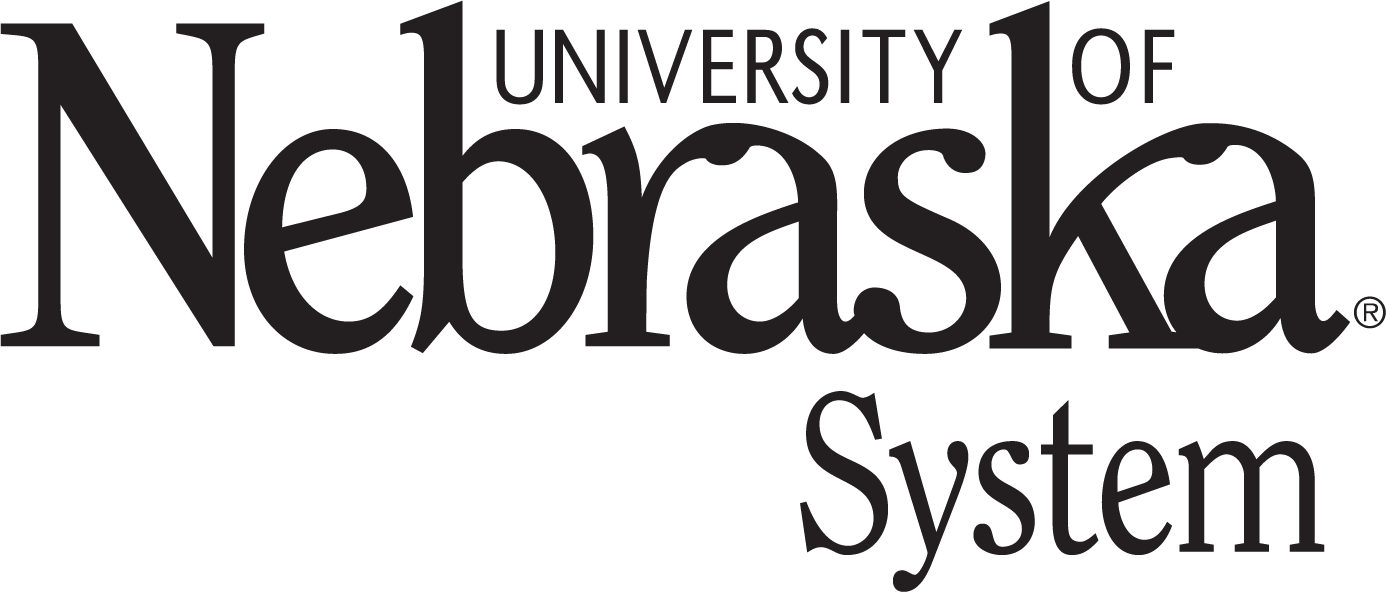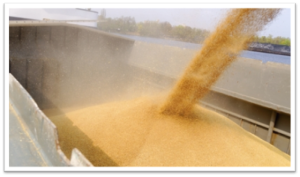1.2 Causes of Grain Dust Explosions
Grain Dust Explosion Pentagon

There are five factors that contribute to the potential for a dust-related explosion. If you remove just one of these, you can likely prevent an explosion. On the diagram, starting on the left, these include:
- Dust must be combustible (presence of fuel and oxygen).
- Dust must be in suspension (dispersed).
- Dust is confined within a room, piece of equipment, or building.
- Dust particles must exceed the minimum explosive concentration in air.
- There must be a source of ignition.
Although all feed grains generate dust, corn carries the largest amount of dust compared to other grains.
What is combustible Ag dust?
Dusts are created when materials are transported, handled, processed, polished, ground and shaped. Dusts are also created by abrasive blasting, cutting, crushing, mixing, sifting or screening dry materials. The buildup of dried residue from the processing of wet materials can also generate dusts.
Essentially, any workplace that generates dust is potentially at risk. Click on each term term below to learn more about what ag dust is, compared with raw grain.
- Grain elevators
- Food production
- Chemical manufacturing (e.g., rubber, plastics, pharmaceuticals)
- Woodworking facilities
- Metal processing (e.g., zinc, magnesium, aluminum, iron)
- Recycling facilities (e.g., paper, plastics, metals)
- Coal-fired power plants

Our job is to break the explosive chain.
Review
Work through these interactive questions to review the important concepts discussed.
Materials that can catch fire and burn easily. In feedmills, managing combustible materials like grain dust is crucial to prevent fires and explosions.
The state of fine particles being dispersed in the air. Controlling dust suspension is crucial to prevent inhalation hazards and reduce the risk of dust explosions.
The process of setting something on fire. In feedmills, managing ignition sources is crucial to prevent fires and explosions, especially with combustible dust present.
A process of cleaning or preparing surfaces using high-pressure air mixed with abrasive particles. Proper safety measures are required to protect workers from inhaling dust and being struck by debris.
Similar to screening, sifting involves separating particles of different sizes. Safety measures are necessary to control dust and prevent inhalation hazards.
The process of separating particles of different sizes using a screen. Proper handling and dust control measures are important to prevent respiratory hazards and explosions.

